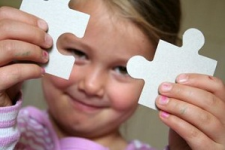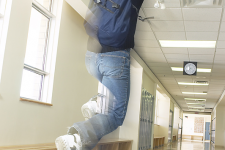Why Use Skype in the Classroom

Skype is a free tool that can be downloaded onto any computer. It allows the user to make free video or voice calls over the Internet. Any two computer users with skype accounts and webcams can see and hear each other.
The possibilities of using Skype in the classroom are practically endless! A teacher […]
Introduction to Using Blogs in the Classroom

The first thing to do is to define what a blog is. The word, blog, is short for web-log. It is an online journal where entries, generally called posts, are written in chronological order with the most recent appearing at the top of the blog. Most blogs allow readers to post comments on […]
Understanding Gifted Education

A lot of teachers are unsure on dealing with gifted learners in their classroom. The natural tendency is to assign more work instead of dealing with the child differently, in order to develop a different learning outcome.
“Gifted education” helps the gifted learner squeeze the most out of his learning process. But how exactly […]
Teaching Tenacity & Metacognition through Games
Games and objects ground instruction, and provide the basis for experience and mental representation — comprehension. When we have this, we can spend less time decoding and more time discussing printed text. So by writing about accessible narratives such as games, we were more successful when reading related printed text. We had learned […]
Accepting Classroom Environment for English Language Learners (ELLs)

The first step in working with students from diverse backgrounds is to create an environment of acceptance so that all students feel welcome, empowered, and ready to learn. Small things that educators do to reach out to students who are ELLs can make a big difference to them while they are learning a […]
Classroom Behavior Basics: Environment
A student’s classroom behavior is a product of the interaction between that student’s personal qualities, including his or her learning history, and the many factors in that student’s current instructional environment.
For example, a student may behave very differently depending on the peers with whom he or she is […]
The Behavior Stream
Individuals are always performing SOME type of behavior: watching others, sleeping, talking, drawing, writing, moving, eating, touching. This is referred to as the behavior stream.
When people are fully engaged in positive behavior, they are less likely to get ‘off-task’ or display problem behavior. Tasks most likely to capture behavior in […]
What’s in a Student’s Name?

Often, the first knowledge a teacher has of an English Language Learner (ELL) in the classroom is his name on a roster. It may look different from typical U.S. names. You may not know how to pronounce it. Sometimes you may be able to guess what language an ELL speaks […]
Classroom Behavior Basics: Language

Various forms of punishment, including physical, were once used widely in school settings to manage student behaviors. Today, research indicates that when used regularly to manage behaviors, punishment is often accompanied by significant negative side effects. It is recommended to provide consistent consequences that TEACH expected behaviors rather than PUNISH misbehaviors […]
Tip & Tease
By Marlene Caroselli, Ed.D
Tip: Use Collective Knowledge
A mind is a terrible thing to waste. So is time. By asking your table groups to record everything they already know about the subject at the beginning of a new unit, you’ll learn what they’ve already learned. Thus you can make some quick, if subtle, adjustments […]



